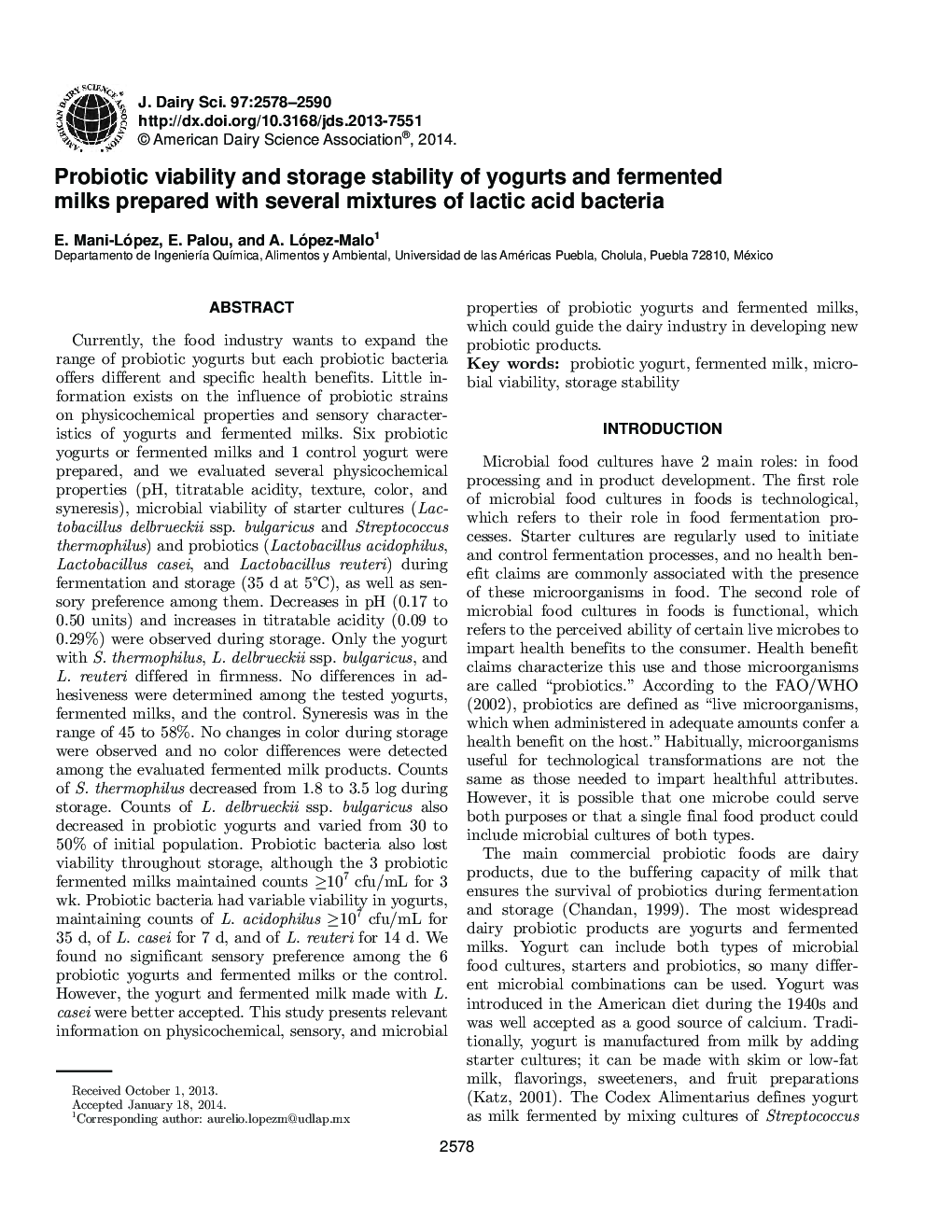| کد مقاله | کد نشریه | سال انتشار | مقاله انگلیسی | نسخه تمام متن |
|---|---|---|---|---|
| 10974388 | 1108025 | 2014 | 13 صفحه PDF | دانلود رایگان |
عنوان انگلیسی مقاله ISI
Probiotic viability and storage stability of yogurts and fermented milks prepared with several mixtures of lactic acid bacteria
ترجمه فارسی عنوان
پایداری پروبیوتیک و ثبات نگهداری ماست و شیر تخمیر شده با چندین مخلوط باکتری های اسید لاکتیک
دانلود مقاله + سفارش ترجمه
دانلود مقاله ISI انگلیسی
رایگان برای ایرانیان
کلمات کلیدی
ماست پروبیوتیک، شیر تخمیر شده، زنده ماندن میکروبی، ثبات ذخیره سازی،
موضوعات مرتبط
علوم زیستی و بیوفناوری
علوم کشاورزی و بیولوژیک
علوم دامی و جانورشناسی
چکیده انگلیسی
Currently, the food industry wants to expand the range of probiotic yogurts but each probiotic bacteria offers different and specific health benefits. Little information exists on the influence of probiotic strains on physicochemical properties and sensory characteristics of yogurts and fermented milks. Six probiotic yogurts or fermented milks and 1 control yogurt were prepared, and we evaluated several physicochemical properties (pH, titratable acidity, texture, color, and syneresis), microbial viability of starter cultures (Lactobacillus delbrueckii ssp. bulgaricus and Streptococcus thermophilus) and probiotics (Lactobacillus acidophilus, Lactobacillus casei, and Lactobacillus reuteri) during fermentation and storage (35 d at 5°C), as well as sensory preference among them. Decreases in pH (0.17 to 0.50 units) and increases in titratable acidity (0.09 to 0.29%) were observed during storage. Only the yogurt with S. thermophilus, L. delbrueckii ssp. bulgaricus, and L. reuteri differed in firmness. No differences in adhesiveness were determined among the tested yogurts, fermented milks, and the control. Syneresis was in the range of 45 to 58%. No changes in color during storage were observed and no color differences were detected among the evaluated fermented milk products. Counts of S. thermophilus decreased from 1.8 to 3.5 log during storage. Counts of L. delbrueckii ssp. bulgaricus also decreased in probiotic yogurts and varied from 30 to 50% of initial population. Probiotic bacteria also lost viability throughout storage, although the 3 probiotic fermented milks maintained counts â¥107 cfu/mL for 3 wk. Probiotic bacteria had variable viability in yogurts, maintaining counts of L. acidophilus â¥107 cfu/mL for 35 d, of L. casei for 7 d, and of L. reuteri for 14 d. We found no significant sensory preference among the 6 probiotic yogurts and fermented milks or the control. However, the yogurt and fermented milk made with L. casei were better accepted. This study presents relevant information on physicochemical, sensory, and microbial properties of probiotic yogurts and fermented milks, which could guide the dairy industry in developing new probiotic products.
ناشر
Database: Elsevier - ScienceDirect (ساینس دایرکت)
Journal: Journal of Dairy Science - Volume 97, Issue 5, May 2014, Pages 2578-2590
Journal: Journal of Dairy Science - Volume 97, Issue 5, May 2014, Pages 2578-2590
نویسندگان
E. Mani-López, E. Palou, A. López-Malo,
